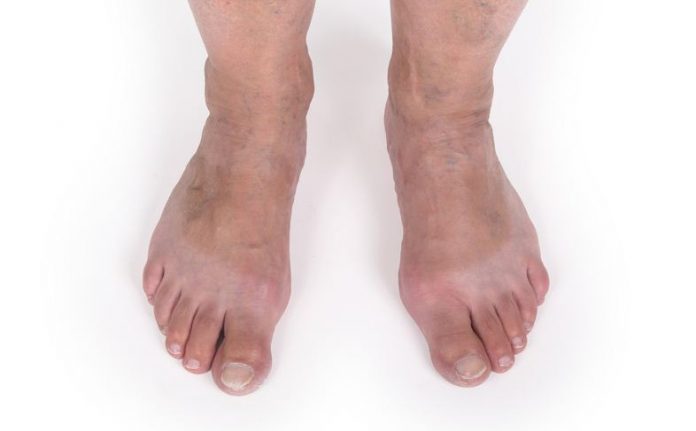Varicose veins are enlarged veins that can be flesh-colored, dark purple or blue. Varicose veins are also called varicosity and varicosis.
They are commonly found on the backs of the calves or on the inside of the legs. These veins are swollen and twisted veins that are visible just under the surface of the skin.
The condition is more common in women, and the people are more likely to get them as they get older.
In the United States, this common condition affects up to 15 percent of men and up to 25 percent of women. Varicose veins are common and are usually not a sign of a serious medical problem.
Treatment
Treatment falls into two basic classes: relief of symptoms and removal of the affected veins. Treatment may be recommended when the varicose veins are causing skin ulcers, serious skin conditions, blood clots, significant pain, or disruption of daily life activities.
Although individual veins can be removed or eliminated by surgery or injection therapy, the disorder cannot be cured.
Treatment is not always necessary. If your varicose veins do not respond to commonly prescribed treatments for varicose veins then it is possible that the veins are a symptom of a much more serious problem such as obesity, impending stroke, or a heart condition.
Treatment includes sclerotherapy, laser surgery, and vein stripping. Current treatments for varicose veins and spider veins have very high success rates compared to traditional surgical treatments.
Some people with varicosity may choose to have medical or surgical treatments to improve the cosmetic appearance of varicose veins.
Other treatments may require that you wear compression stockings or bandages for a period ranging from a couple of days to a few weeks following the procedure.
A combination of treatments often produces the best results. Keep in mind, as time passes, you may find that you need “touch-up or full treatments for new veins that surface.
Prevention
How can I prevent varicose veins and spider veins? Sorry to say there is no way to completely prevent varicose veins.
Given that the causes are still undetermined, the prevention of varicose veins is debatable. It is generally felt that long term, support hose wearing may prevent these veins from forming or cause those veins you already have to disappear.
Some say the best way to prevent varicose veins if they are in your family is to avoid standing for long periods.
Others suggest, elevating legs by lying down or using a footstool when sitting relieves the symptoms of varicose veins but does not prevent new veins from forming.
In conclusion, varicose veins are most common in the legs and thighs. Varicose veins are abnormally dilated blood vessels caused by a weakening in the vessel wall.
These veins are most common on the legs, because leg veins must work against gravity. The root causes of varicose veins are unclear.
Usually the condition is not dangerous, so if you don’t mind their appearance they can go untreated with no problems.

